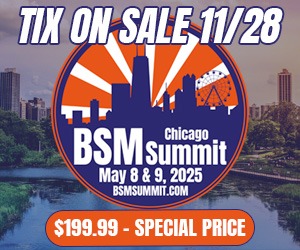Last week I was introduced to a new television program. The show is called “Startup U” and it features a number of students and young entrepreneurs who spend 7-weeks at a place in the Silicon Valley called Draper University. Each person introduces an idea for their own business, and is then tasked with developing their product and skills, working with instructors on ways to pitch themselves and their company, and enduring the wrath of many highly successful business leaders. At the end of the season, each person pitches their idea to billionaire venture capitalist Tim Draper, who chooses one person to invest in and help launch their product.
 Similar to every other reality show, the cast are put through various challenges, forced to live together, and with each passing week you see the best and worst in people emerge. What made this show different though was that many of the ideas, strategies, reactions and coaching techniques were very similar to what I’ve endured during my career in radio. Even the final goal (winning Draper’s confidence and money) is no different than what broadcasters and radio companies must do each day (win over listeners and advertisers).
Similar to every other reality show, the cast are put through various challenges, forced to live together, and with each passing week you see the best and worst in people emerge. What made this show different though was that many of the ideas, strategies, reactions and coaching techniques were very similar to what I’ve endured during my career in radio. Even the final goal (winning Draper’s confidence and money) is no different than what broadcasters and radio companies must do each day (win over listeners and advertisers).
One particular challenge got the juices in my brain flowing. Two teams were asked to take part in a game of Volleyball, except Draper wanted them to change the game and make it better. Many involved in the game immediately questioned the purpose of the challenge, and others seemed unsure what to do because the concept of the original game had been permanently planted inside their heads. When new ideas were introduced, they included serving with both hands, serving multiple balls at once, and serving with your head.
While certain ideas were better than others, it got me to thinking “isn’t this the same exact challenge we face with radio“? I quickly recalled driving across the country in June from California to New York, and each time I reached another major city and flipped on a sports station, I heard a lot of the same things. Break times nearly identical. Voice talent, imaging and sports updates in sync with the companies who were running the format. Callers and Guests filling up each hour around a Host’s opinion on the local teams in the market. In a nutshell, there wasn’t much different between one station and the next, besides the personalities.
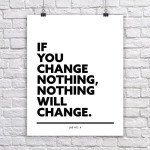 Draper challenged the people involved in the volleyball game that day to “break the rules, and make things better” and it got me thinking about whether or not enough of us in radio today care to do the same. There seems to be a lot of “if it’s not broken, don’t fix it” thinking and that’s the type of mindset that eventually gets you caught. You can’t operate a winning brand with a narrow view of the present. If you’re not willing to embrace new ideas, take calculated risks and introduce new voices, styles, and concepts into your presentation, eventually it becomes stale, and when the audience tires of it, and drifts away, good luck getting them back.
Draper challenged the people involved in the volleyball game that day to “break the rules, and make things better” and it got me thinking about whether or not enough of us in radio today care to do the same. There seems to be a lot of “if it’s not broken, don’t fix it” thinking and that’s the type of mindset that eventually gets you caught. You can’t operate a winning brand with a narrow view of the present. If you’re not willing to embrace new ideas, take calculated risks and introduce new voices, styles, and concepts into your presentation, eventually it becomes stale, and when the audience tires of it, and drifts away, good luck getting them back.
I look around and I see an entire industry worrying about earning credit from a PPM meter, more than focusing on the importance of creating killer content that can’t be missed. I know, I’ve been guilty of it myself. But what about the world that awaits us? Are you prepared for the challenge that awaits from podcasting platforms? What about when digital dashboards overtake cars and many of the transplants in your market start listening to their favorite stations back home? How about when the age of your audience changes, and you find that today’s youth between the ages of 12-24 care about brands like YouTube, Spotify, Instagram, SnapChat, and Twitter and don’t even listen to radio?
Sure we have to keep our eyes on the current marketplace too and not be irresponsible, but those who develop great brands and hire talented people, can afford to break the rules, think different and challenge themselves to do things better. If you’ve earned the audience’s trust, they will stand by you while you introduce a few new ideas. If we’ve learned anything over the course of history it’s that people like new things.
I started racking my brain about the numerous things I hear on sports radio today, and what crazy ideas I would’ve come up with if Tim Draper had issued that challenge to me about improving sports radio instead of a game of volleyball. While I can’t say they’d all generate ratings, make more money, or even make sense, I know I wouldn’t have to be asked twice to break the rules to try and make things better. And after all, isn’t that why we do this job in the first place?
Here are some crazy things to think about. We can agree or disagree on their viability, but if you’re not thinking about what you’re going to do to make your product better and challenging yourself to do it, don’t be surprised when the day comes when your employer is looking for someone who does.
Commercial Breaks:
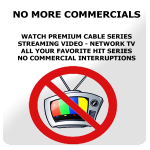 Scan any sports station and you’re going to find the majority of them running 3 or 4 breaks per hour and the commercial inventory usually between 12 and 20 minutes per hour. That doesn’t include sports updates, traffic reports, weather reports, station promos, or recorded liners that lead a show in and out of a break. This is done because stations want to spread out the amount of minutes in a commercial break to not overload the audience, and because they’re trying to gain as much content time inside of a quarter hour to try and gain credit for listening from Nielsen.
Scan any sports station and you’re going to find the majority of them running 3 or 4 breaks per hour and the commercial inventory usually between 12 and 20 minutes per hour. That doesn’t include sports updates, traffic reports, weather reports, station promos, or recorded liners that lead a show in and out of a break. This is done because stations want to spread out the amount of minutes in a commercial break to not overload the audience, and because they’re trying to gain as much content time inside of a quarter hour to try and gain credit for listening from Nielsen.
However, Nielsen also recommends that stations take as few breaks as possible, as disruptions can often lead to tune outs which don’t return. So what would happen if a station ran one break during an hour during the quarter hour that produced the least amount of listening? For example, if listening was less between :45-:00, is a station better served trying to win the first 45 minutes of the hour and concede the final quarter hour or stick with it’s current formula?
What if the station went with two breaks per hour? Maybe 15 minutes of spots in a row is insane, but what if it’s 7 minutes instead? Is there much of a difference to the audience between a 5 minute break and a 7 minute break? Are you better served with 2 long breaks or 3 semi-long breaks?
If you’re not a fan of long breaks, what about shorter ones? Is it more beneficial to hit the audience over the head with 3 breaks that are 4 minutes long apiece, or give them 6 breaks that are each 2 minutes long? You can also argue, is your talent better delivering focused content for 6 segments which are shorter in length, or 3 which are a lot longer.
I recognize that radio stations want to sell all the commercials they can, but reducing the total amount of minutes per hour and charging premium dollars for ads is where the world is going. I’m sure doing that would lead to a short-term loss in revenue, and no operator or company wants to hear that, but I can watch a YouTube video or listen to a few songs on Spotify with only a :15-:30 second distraction. I can listen to a podcast with a few verbal plugs in content and no disruptions, and I can watch a show on HBO without commercials because I pay for the channel (SiriusXM). You can only force the audience to stomach long commercial breaks for so long. Once they go, then what are you going to tell your advertisers?
Not to mention, if people are coming to you for sports, why are you bombarding them with weather reports, stock reports and traffic reports? Are those items sports related? When was the last time you put on SportsCenter, NFL Live, Baseball Tonight or any other sports show and said “damn, I really want to know the weather”? If it’s strictly about attaching a client to a benchmark, create something different – maybe a team related report, a host commentary, a :60 debate between two personalities, or attach them to your products through social media or website. Your air time is precious and shouldn’t be cluttered.
Imaging Voices and Presentations:
I love Jim Cutler and Paul Turner, and think they are the very best voice talents in our industry today. What I wish we had though were more Jim Cutler’s and Paul Turner’s. Too many stations sound the same, and that’s because a lot of us do what others do, and we seek out those who we already know. If the format looked for on-air talent that way, we’d all be screwed.
I hired Steve Stone to be my voice guy in San Francisco, and I think the work he’s done in making 95.7 The Game sound unique is excellent. I also know how incredible Dawn Cutler is and I wonder “why aren’t more stations utilizing her full-time“?
 It raises the question about creating unique brand identities. What I love about television is how so many brands are different. I can turn on ESPN, Fox Sports 1, CBS, NBC or my local sports channels and I won’t hear the same thing. I can watch HBO, FX, TNT, USA and Showtime and the graphics, writing, imaging and voice talent will all be original. If it can be done on that level, then why can’t it be that way in radio?
It raises the question about creating unique brand identities. What I love about television is how so many brands are different. I can turn on ESPN, Fox Sports 1, CBS, NBC or my local sports channels and I won’t hear the same thing. I can watch HBO, FX, TNT, USA and Showtime and the graphics, writing, imaging and voice talent will all be original. If it can be done on that level, then why can’t it be that way in radio?
Must every ESPN sports station and CBS sports station have the same uniformed sound and layout beyond the personalities? And it’s not just the voices, the bells and whistles with much of the imaging are laid out similarly too. I understand the reasons why certain brands do it, but I can equally call into question how it makes them predictable, and we can debate all day about whether or not it generates ratings.
Maybe I’m naive, but I believe there are some outstanding imaging directors and program directors out there who have the ability to make their brands sound distinctive. Each market and group of people are different, yet the same company formula exists. If a connection is made with the audience, and the brand name isn’t compromised, then does it matter if the people on the front lines take a different approach? Why must hundreds of sports stations have the same look, feel and sound, and stifle creativity?
Sports Updates:
While they were important to the audience 10-15 years ago, today many of them are filled with the same stories you hear the talent talking about. They also are often behind the pace of social media, which is where sports fans are seeking out their content first. I’ve always enjoyed them for one reason, it introduces another voice into the show, which provides room for extra creativity, but the update itself has become white noise in many cases.
 Once again, if you turn on an ESPN or CBS sports station though, you’ll hear the same exact approach. ESPN brands will give you SportsCenter updates 2-3x per hour, and CBS brands provide 20/20 Sports Flashes 3x per hour. Does the listening audience really seek out this content and value it?
Once again, if you turn on an ESPN or CBS sports station though, you’ll hear the same exact approach. ESPN brands will give you SportsCenter updates 2-3x per hour, and CBS brands provide 20/20 Sports Flashes 3x per hour. Does the listening audience really seek out this content and value it?
I believe the update is beneficial if it’s going to feature audio in it from other points of the broadcast day to try and engage the listener and give them reasons to listen more, or seek out the content later on the station’s website. I also believe it has value to advertisers since they can get a :10 tag included in them, and when done multiple times per hour, that can lead to numerous messages for the client. But what about the listener?
If we really value the audience, I’m not sure this content is vital. I’d rather see a radio station take their update anchor and put them into a position where they’re writing more content for the website, producing videos on the website, engaging more thru the station and their own personal social media pages, and sending them out to appearances and games to help the station gain something of larger value. I believe the anchor who has the ability to interact with a talk show host and take on more of a personality role in a show is a great thing, but I don’t believe that 3-6 minutes per hour of content time rehashing scores, game times, injury updates, and other lesser news, has great importance to the audience.
Show Lengths:
Based on economics, companies today will usually put a personality on the air for 3-4 hours per day. Hosts like it because they get to talk a lot and try out a number of things, and overall the approach makes sense because there are only so many hours in a day and you can’t employ 40 personalities per day or expect a host to be sharp doing a 6-8 hour daily show.
The one problem though is when it comes to judging its effectiveness. How many personalities really evaluate each of their hours, their content selections, their interview performances, the gains/decreases in caller activity, and whether or not they were better skilled at providing a 1-2 hour show versus a 3-4 hour show?
Most of sports radio today functions with people doing what they think and feel, and there’s no reason for them not to do that. But that’s because there’s not a lot of analysis being done on what does and doesn’t work. We usually give a personality their ratings, tell them if they gained or decreased month to month, and give them a pat on the back and tell them to keep moving forward. Rarely is the focus placed on “why” the numbers grew or dipped, or how to best take advantage of each hour of broadcasting time.
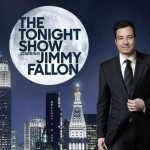 If you look at the best televison programs that deliver massive audiences, they usually involve a large cast, and are either 30 or 60 minutes in length. They maximize every single second of those programs with incredible content, and put hours upon hours into the presentation, including a lot of writing. For example, Jimmy Fallon delivers a 1-hour nightly show, yet he and his writing team will spend all day and night, making sure the product is crisp before it hits the air.
If you look at the best televison programs that deliver massive audiences, they usually involve a large cast, and are either 30 or 60 minutes in length. They maximize every single second of those programs with incredible content, and put hours upon hours into the presentation, including a lot of writing. For example, Jimmy Fallon delivers a 1-hour nightly show, yet he and his writing team will spend all day and night, making sure the product is crisp before it hits the air.
If radio employed Jimmy Fallon, it would expect him to deliver the same quality bits, interviews, punchlines and storytelling, yet throw him on the air for 4 hours per day with minimal preparation time, let alone surround him with a cast of 1 to 2 people. When the performance suffers, the blame shifts on the individual, the audience or the meters, not the process or support towards producing dynamic content.
I’m not sure it makes financial sense for radio stations to deliver 30-minute shows or 1-hour shows versus 3-4 hour shows but podcasters are doing this and growing larger and larger because they provide content which is often polished and shorter in length. People don’t have 3-4 hours of time to give to us, and they’d rather hear 1 great hour, instead of 3-4 good ones.
Show Styles:
 Look at the rundown for most sports shows across the country and you’ll see the following hourly layout: 2-3 topics discussed, 1 guest, calls and tweets from the audience. Even when personalities promote their shows, it’s usually the same way – “Can’t wait to discuss last night’s game + guest A at ___ time and guest B at ____ time.”
Look at the rundown for most sports shows across the country and you’ll see the following hourly layout: 2-3 topics discussed, 1 guest, calls and tweets from the audience. Even when personalities promote their shows, it’s usually the same way – “Can’t wait to discuss last night’s game + guest A at ___ time and guest B at ____ time.”
If the show is built around the personality tweeting out the promotional message, shouldn’t it start with what they care about? If it’s a big guest I get that (EX: Podcast One last week had an exclusive sitdown with Shaq and Kobe – that you promote all day and night), but if you don’t provide some suspense in what you’re going to discuss, and just rely on the appointment times of a guest, you’re not leading the show.
That said, there are better ways to lay out a show too. If a host is great at taking calls but bad at interviews, why book guests on their show in the first place? If the situation is reversed, maybe it’s better to feature 6-7 guests and keep the host away from engaging with callers. The key is concentrating on their strengths and keeping each day interesting, not formulaic.
Have you ever considered making one day of your week only a football day? Only a baseball day? Only a day where interactions come from Facebook, Twitter, Email, Text or Calls? Maybe you create a day where you’re offering a series of 1-hour in-studio panels on themed subjects (EX: hour 1 = the host and 2 guests talking non-stop NFL, hour 2 the host and 2 guests talking non-stop baseball, etc.).
Some of this may work, some of it may not. Much of that depends on the host, producer, program director, and audience habits, but the point is that different things can be done, if you’re willing to open your mind to them. Not every day needs to feature the same layout, with the only difference being your topics.
Promos:
A good friend of mine Scott Masteller refers to promos as “content advancers“. While the word “promo” is seen as a commercial given to the station’s programming team to tout messages of their brand’s greatness, “content advancers” portray a message that the best content will be highlighted and discussed throughout the broadcast day. That makes sense to me.
However, if you listen to a lot of CBS sports stations, they put less stock in promos. While you can question why they wouldn’t use their time to promote things more, I recall attending a sports radio conference and hearing Jim Cutler say it best “A promo to the listener is a commercial disruption“. If the goal is to stay in content and eliminate interruptions, you can make the case that promos aren’t necessary.
 If they’re going to be utilized, then shouldn’t the writing, imaging, and frequency of them be analyzed? Some stations try to promote 10-15 things during a given week rather than concentrating on 3-4. Think about this, if you were running CBS Television during the week of the Super Bowl, you’d promote the game again and again. Sure you may have other shows on the air, and they’ll be promoted through other channels (social media, email, newsletter, website, text clubs, etc.) but priority #1 on the air would be the promotion of the Super Bowl.
If they’re going to be utilized, then shouldn’t the writing, imaging, and frequency of them be analyzed? Some stations try to promote 10-15 things during a given week rather than concentrating on 3-4. Think about this, if you were running CBS Television during the week of the Super Bowl, you’d promote the game again and again. Sure you may have other shows on the air, and they’ll be promoted through other channels (social media, email, newsletter, website, text clubs, etc.) but priority #1 on the air would be the promotion of the Super Bowl.
Look at your radio station and ask yourself “which of my brand items is my Super Bowl“? Do you have 3-4 of them? If you’re not creating promos that stand out, offer something of value, and sound big, then ask yourself if they really need to occupy :30 seconds of air time.
Additionally, do you need 1 promo per hour? 2 per hour? 10 per hour? If a message is pushed enough and carries with it something of substance, it can be branded into the listener’s brain. The question is, how much is enough?
Often station programmers implement clocks and in them come set times for promos, usually a few times per hour. The only problem with that is predictability. While it may be a pain in the ass, mixing it up isn’t a bad thing. If you have higher audiences during two hours of morning and afternoon drive, you may want to push the messaging hard, and not run anything during the lighter times. It’s all about getting the most value, and utilizing your time wisely.
Liners:
 I hear some stations go in and out of breaks with music beds. Some do it without any music or production. Others meanwhile have produced liners voiced by the station’s voice talent or a local athlete, which identify the name of the show, station, a slogan, etc.
I hear some stations go in and out of breaks with music beds. Some do it without any music or production. Others meanwhile have produced liners voiced by the station’s voice talent or a local athlete, which identify the name of the show, station, a slogan, etc.
There’s no right or wrong, but if you look at it from the standpoint of “is this worth airing 3-4x per hour, and taking up :30-:60 seconds of my broadcast time” then you should have a better grasp of whether or not it’s valuable. If you’re not going to use the liner to reinforce your brand position or offer something creative or memorable, get it off the air. They’re denying your best asset (your on-air talent) more content time, which could make a stronger impact with the audience. If you can’t put some time into the writing and imaging, and use them effectively, then save yourself the extra minute. It will only hurt you if it’s not done well.
The only question I have here is whether or not they serve a purpose even when they are done well. I can watch a show without liners leading into segments and it never takes away from my experience of enjoying it. Secondly, does a station need to have them in place every segment? Can you use them 1x per hour leading in or 1x per hour bumping out? Why must it be “always leading into segments“, “always bumping out of segments” or “not at all“. Once again, unpredictability keeps an audience engaged, and maximizing our seconds is necessary for having success.
Conclusion:
There are a number of things about sports radio that could easily be better. The most important one in my opinion is eliminating its predictability. The point of this article wasn’t to suggest that everything we’re doing needs an overhaul because that’s not the case at all. However, we should be thinking about whether or not we’re taking advantage of everything we have at our disposal, and if we’re testing ourselves as best we can. If we’re doing things because they’re simple and it’s how they’ve always been done, then that’s a bad reason to do it. Especially when the future depends on our ability to adapt and create.
 When I watched “Startup U”, I found myself thinking of the sports radio format, where it ranks, how it operates, what challenges it faces from other media platforms, and whether or not we have enough operators with the skill necessary to reinvent and make the format cooler. If our industry’s future was on the line, and we had to deliver a winning pitch to a room full of investors, how do you think we’d do? I’d like to believe we’d emerge victorious, but I’m not so sure we would. I guess that answer was predictable though.
When I watched “Startup U”, I found myself thinking of the sports radio format, where it ranks, how it operates, what challenges it faces from other media platforms, and whether or not we have enough operators with the skill necessary to reinvent and make the format cooler. If our industry’s future was on the line, and we had to deliver a winning pitch to a room full of investors, how do you think we’d do? I’d like to believe we’d emerge victorious, but I’m not so sure we would. I guess that answer was predictable though.
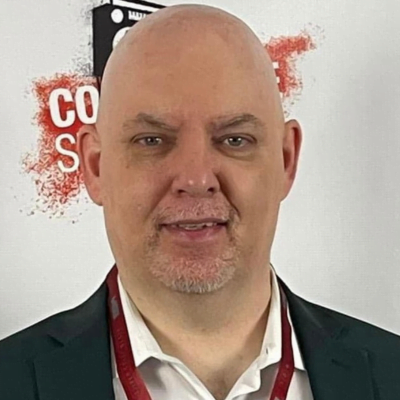
Jason Barrett is the President and Founder of Barrett Media since the company was created in September 2015. Prior to its arrival, JB served as a sports radio programmer, launching brands such as 95.7 The Game in San Francisco, and 101 ESPN in St. Louis. He also spent time programming SportsTalk 950 in Philadelphia, 590 The Fan KFNS in St. Louis, and ESPN 1340/1390 in Poughkeepsie, NY. Jason also worked on-air and behind the scenes in local radio at 101.5 WPDH, WTBQ 1110AM, and WPYX 106.5. He also spent two years on the national stage, producing radio shows for ESPN Radio in Bristol, CT. Among them included the Dan Patrick Show, and GameNight.
You can find JB on Twitter @SportsRadioPD. He’s also reachable by email at Jason@BarrettMedia.com.




